False Color Image Of Uranus Taken With The Hale Telescope And The Palomar Observatory. The Rings Are

False color image of Uranus taken with the Hale Telescope and the Palomar Observatory. The rings are the red pieces.
Image credit: Palomar Observatory & Hale telescope
More Posts from Xyhor-astronomy and Others

Ghost Nebula
What’s the deal about gravitational waves?
I guess y’all have heard about the discovery gravitational waves, and the recent observation of gravity waves linked to a visual observation as well.
What are they?
Gravitational waves are disturbances in space-time that are caused by objects in motion. Objects with mass distort spacetime, and thus when they move they also create disturbances. Think moving your hand along the surface of a pond - your hand’s motion creates waves and ripples in the water. Gravity waves were theorized by Einstein when he published his paper on General Relativity in the mid 1900s, and they were finally confirmed by LIGO about a year or two ago. The discovery of gravitational waves was considered the last major test of General Relativity, meaning that everything it’s predicted has held up to testing. As these gravity waves pass through space, they stretch it in one direction and compress it in the other. Check these two gifs out for a good visualization:



What is LIGO?
Ligo, or Laser Inferometer Gravity-wave Observatory, is one of three gravity wave observatories in the world. It works by splitting a laser into two perpendicular components. The light waves travel down long tunnels, bounce off a mirror, and recombine at the intersection. The interference pattern of the two light waves is measured (interference is how two light waves interact with each other - if the peaks and troughs line up, they cancel, but if the peaks line up they add together). When a gravitational wave passes by, it stretches everything in one direction while compressing it in the other direction, then vice versa. This causes a change in the interference pattern, which is then measured. Here’s a good diagram:

If you want more information about gravity waves, check out these videos:
Sources: Image 1 2 3 4, check out the links for good explanations.
Let me know if y’all have any questions!!! I’m happy to answer them.
Solar System: 10 Things to Know This Week
Need some space?
Here are 10 perspective-building images for your computer desktop and mobile device wallpaper.
These are all real images, sent very recently by our planetary missions throughout the solar system.
1. Our Sun

Warm up with this view from our Solar Dynamics Observatory showing active regions on the Sun in October 2017. They were observed in a wavelength of extreme ultraviolet light that reveals plasma heated to over a million degrees.
Downloads Desktop: 1280 x 800 | 1600 x 1200 | 1920 x 1200 Mobile: 1440 x 2560 | 1080 x 1920 | 750 x 1334
2. Jupiter Up-Close

This series of enhanced-color images shows Jupiter up close and personal, as our Juno spacecraft performed its eighth flyby of the gas giant planet on Sept. 1, 2017.
Downloads Desktop: 1280 x 800 | 1600 x 1200 | 1920 x 1200 Mobile: 1440 x 2560 | 1080 x 1920 | 750 x 1334
3. Saturn’s and Its Rings

With this mosaic from Oct. 28, 2016, our Cassini spacecraft captured one of its last looks at Saturn and its main rings from a distance.
Downloads Desktop: 1280 x 800 | 1600 x 1200 | 1920 x 1200 Mobile: 1440 x 2560 | 1080 x 1920 | 750 x 1334
4. Gale Crater on Mars

This look from our Curiosity Mars rover includes several geological layers in Gale crater to be examined by the mission, as well as the higher reaches of Mount Sharp beyond. The redder rocks of the foreground are part of the Murray formation. Pale gray rocks in the middle distance of the right half of the image are in the Clay Unit. A band between those terrains is “Vera Rubin Ridge,” where the rover is working currently. The view combines six images taken with the rover’s Mast Camera (Mastcam) on Jan. 24, 2017.
Downloads Desktop: 1280 x 800 | 1600 x 1200 | 1920 x 1200 Mobile: 1440 x 2560 | 1080 x 1920 | 750 x 1334
5. Sliver of Saturn

Cassini peers toward a sliver of Saturn’s sunlit atmosphere while the icy rings stretch across the foreground as a dark band on March 31, 2017. This view looks toward the unilluminated side of the rings from about 7 degrees below the ring plane.
Downloads Desktop: 1280 x 800 | 1600 x 1200 | 1920 x 1200 Mobile: 1440 x 2560 | 1080 x 1920 | 750 x 1334
6. Dwarf Planet Ceres

This image of the limb of dwarf planet Ceres shows a section of the northern hemisphere, as seen by our Dawn mission. Prominently featured is Occator Crater, home of Ceres’ intriguing “bright spots.” The latest research suggests that the bright material in this crater is comprised of salts left behind after a briny liquid emerged from below.
Downloads Desktop: 1280 x 800 | 1600 x 1200 | 1920 x 1200 Mobile: 1440 x 2560 | 1080 x 1920 | 750 x 1334
7. Martian Crater

This image from our Mars Reconnaissance Orbiter (MRO) shows a crater in the region with the most impressive known gully activity in Mars’ northern hemisphere. Gullies are active in the winter due to carbon dioxide frost, but northern winters are shorter and warmer than southern winters, so there is less frost and less gully activity.
Downloads Desktop: 1280 x 800 | 1600 x 1200 | 1920 x 1200 Mobile: 1440 x 2560 | 1080 x 1920 | 750 x 1334
8. Dynamic Storm on Jupiter

A dynamic storm at the southern edge of Jupiter’s northern polar region dominates this Jovian cloudscape, courtesy of Juno. This storm is a long-lived anticyclonic oval named North North Temperate Little Red Spot 1. Citizen scientists Gerald Eichstädt and Seán Doran processed this image using data from the JunoCam imager.
Downloads Desktop: 1280 x 800 | 1600 x 1200 | 1920 x 1200 Mobile: 1440 x 2560 | 1080 x 1920 | 750 x 1334
9. Rings Beyond Saturn’s Sunlit Horizon

This false-color view from the Cassini spacecraft gazes toward the rings beyond Saturn’s sunlit horizon. Along the limb (the planet’s edge) at left can be seen a thin, detached haze.
Downloads Desktop: 1280 x 800 | 1600 x 1200 | 1920 x 1200 Mobile: 1440 x 2560 | 1080 x 1920 | 750 x 1334
10. Saturn’s Ocean-Bearing Moon Enceladus

Saturn’s active, ocean-bearing moon Enceladus sinks behind the giant planet in a farewell portrait from Cassini. This view of Enceladus was taken by NASA’s Cassini spacecraft on Sept. 13, 2017. It is among the last images Cassini sent back before its mission came to an end on Sept. 15, after nearly 20 years in space.
Downloads Desktop: 1280 x 800 | 1600 x 1200 | 1920 x 1200 Mobile: 1440 x 2560 | 1080 x 1920 | 750 x 1334
Applying Wallpaper: 1. Click on the screen resolution you would like to use. 2. Right-click on the image (control-click on a Mac) and select the option ‘Set the Background’ or 'Set as Wallpaper’ (or similar).
Places to look for more of our pictures include solarsystem.nasa.gov/galleries, images.nasa.gov and www.jpl.nasa.gov/spaceimages.
Make sure to follow us on Tumblr for your regular dose of space: http://nasa.tumblr.com
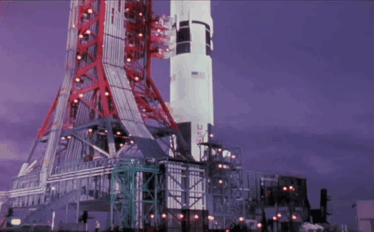
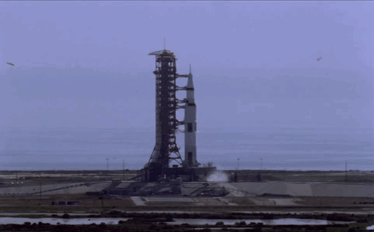
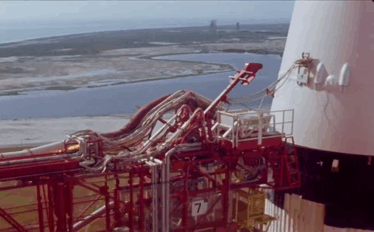
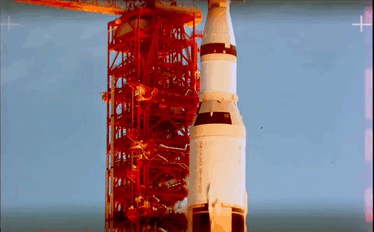
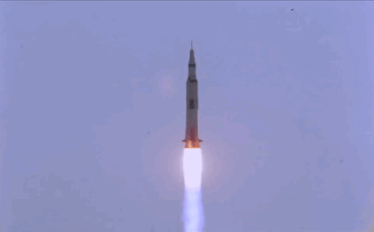
Apollo 11 Launch
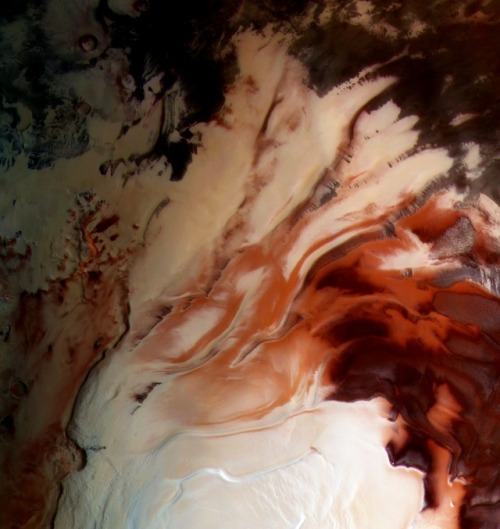
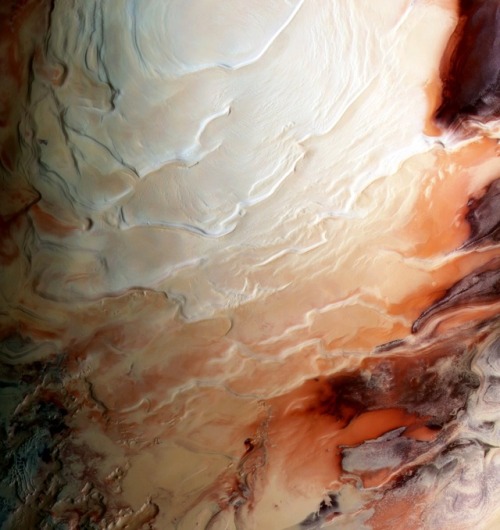
Martian North Pole
ESA / G. Neukum (Freie Universitaet, Berlin) / Bill Dunford
What’s Up November 2017
What’s Up For November?
Dawn pairing of Jupiter and Venus, Moon shines near star clusters, meteor activity all month long!

This month binoculars will come in handy–to view the moon, star clusters, and a close pairing of Venus and Jupiter.

You can’t miss bright Venus in the predawn sky. This month Venus pairs up with Jupiter on the morning of November 13th.

The Leonids peak on a moonless November 17th. Expect no more than 10 meteors an hour around 3:00 a.m., the height of the shower.

The Northern and Southern sub-branches of the Taurid meteor shower offer sparse counts of about 5 meteors per hour, but slow, bright meteors are common.

The nearby November Orionids peak on the 28th. In contrast to the Taurids, the Orionids are swift. But don’t expect more than 3 meteors per hour.

The moon glides by three beautiful star clusters in the morning sky this month, and a pair of binoculars will allow you to see the individual stars in the clusters. Aim your binoculars at the Pleiades and the moon on the 5th.

Then aim at the Messier or M-35 cluster and the moon on the 7th and the Beehive cluster and the moon on the 10th.

Meanwhile, at dusk, catch Saturn as it dips closer to the western horizon and pairs up with Mercury on the 24th through the 28th.

Also, Comet C/2017 O1 should still be a binocular-friendly magnitude 7 or 8 greenish object in November. Use Polaris, the North Star as a guide. Look in the East to Northeast sky in the late evening.
Watch the full What’s Up for November Video:
Make sure to follow us on Tumblr for your regular dose of space: http://nasa.tumblr.com.
Oldest recorded solar eclipse helps date the Egyptian pharaohs

UNIVERSITY OF CAMBRIDGE—Researchers have pinpointed the date of what could be the oldest solar eclipse yet recorded. The event, which occurred on 30 October 1207 BC, is mentioned in the Bible, and could have consequences for the chronology of the ancient world.
Using a combination of the biblical text and an ancient Egyptian text, the researchers were then able to refine the dates of the Egyptian pharaohs, in particular the dates of the reign of Ramesses the Great. The results are published in the Royal Astronomical Society journal Astronomy & Geophysics.
The biblical text in question comes from the Old Testament book of Joshua and has puzzled biblical scholars for centuries. It records that after Joshua led the people of Israel into Canaan - a region of the ancient Near East that covered modern-day Israel and Palestine - he prayed: “Sun, stand still at Gibeon, and Moon, in the Valley of Aijalon. And the Sun stood still, and the Moon stopped, until the nation took vengeance on their enemies.” Read more.
Space Station flight from a clear North Africa over a story Mediterranean





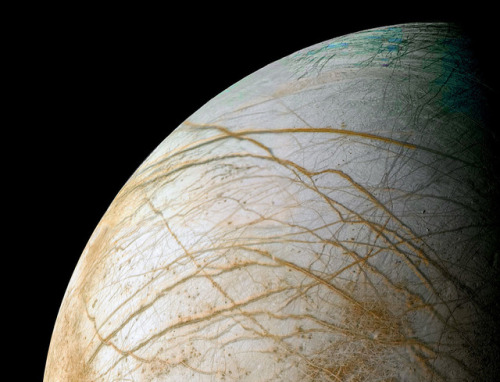
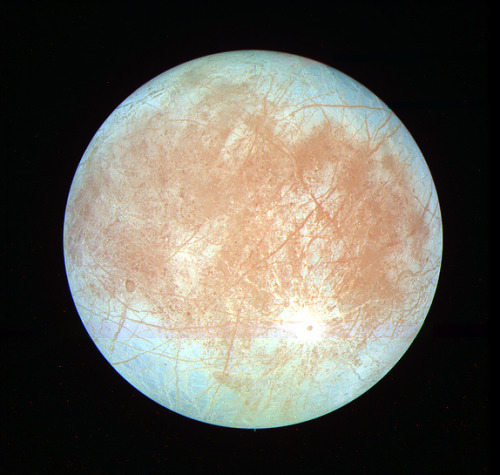


Europa
Jupiter’s moon Europa is slightly smaller than Earth’s moon. Its surface is smooth and bright, consisting of water ice crisscrossed by long, linear fractures. Like our planet, Europa is thought to have an iron core, a rocky mantle and an ocean of salty water beneath its ice crust. Unlike Earth, however, this ocean would be deep enough to extend from the moon’s surface to the top of its rocky mantle. Being far from the sun, the ocean’s surface would be globally frozen over. While evidence for this internal ocean is quite strong, its presence awaits confirmation by a future mission.
Europa orbits Jupiter every 3.5 days and is locked by gravity to Jupiter such that the same hemisphere of the moon always faces the planet. Because Europa’s orbit is slightly stretched out from circular, or elliptical, its distance from Jupiter varies, creating tides that stretch and relax its surface. The tides occur because Jupiter’s gravity is just slightly stronger on the near side of the moon than on the far side, and the magnitude of this difference changes as Europa orbits. Flexing from the tides supplies energy to the moon’s icy shell, creating the linear fractures across its surface. If Europa’s ocean exists, the tides might also create volcanic or hydrothermal activity on the seafloor, supplying nutrients that could make the ocean suitable for living things.

Europa Clipper
NASA’s planned Europa Clipper would conduct detailed reconnaissance of Jupiter’s moon Europa and investigate whether the icy moon could harbor conditions suitable for life.
The mission would place a spacecraft in orbit around Jupiter in order to perform a detailed investigation of the giant planet’s moon Europa – a world that shows strong evidence for an ocean of liquid water beneath its icy crust and which could host conditions favorable for life. The mission would send a highly capable, radiation-tolerant spacecraft into a long, looping orbit around Jupiter to perform repeated close flybys of Europa. NASA has selected nine science instruments for a future mission to Europa. The selected payload includes cameras and spectrometers to produce high-resolution images of Europa’s surface and determine its composition. An ice penetrating radar would determine the thickness of the moon’s icy shell and search for subsurface lakes similar to those beneath Antarctica’s ice sheet. The mission would also carry a magnetometer to measure the strength and direction of the moon’s magnetic field, which would allow scientists to determine the depth and salinity of its ocean.
Image credit: NASA / JPL / Galileo / Voyager & Processed by Kevin M. Gill
Credit: NASA & Europa Clipper Mission
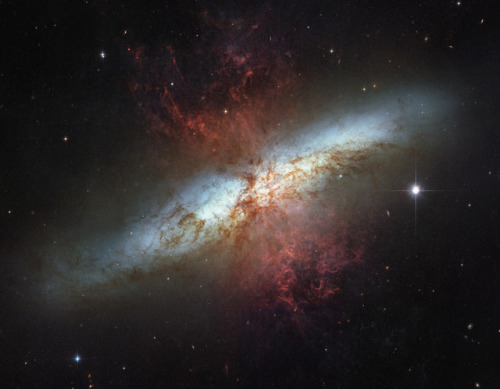
Messier 82
Messier 82 is a starburst galaxy about 12 million light-years away in the constellation Ursa Major. A member of the M81 Group, it is about five times more luminous than the whole Milky Way and has a center one hundred times more luminous than our galaxy’s center.
Image credit: NASA/ESA & Hubble
-
 the-joysof-life liked this · 1 year ago
the-joysof-life liked this · 1 year ago -
 ravexandxlust liked this · 1 year ago
ravexandxlust liked this · 1 year ago -
 liarebergtan liked this · 1 year ago
liarebergtan liked this · 1 year ago -
 wisent15 liked this · 2 years ago
wisent15 liked this · 2 years ago -
 wisent15 reblogged this · 2 years ago
wisent15 reblogged this · 2 years ago -
 susidark liked this · 2 years ago
susidark liked this · 2 years ago -
 fourlatn liked this · 2 years ago
fourlatn liked this · 2 years ago -
 nagasarennayoex reblogged this · 2 years ago
nagasarennayoex reblogged this · 2 years ago -
 nagasarennayoex liked this · 2 years ago
nagasarennayoex liked this · 2 years ago -
 notdjalul liked this · 3 years ago
notdjalul liked this · 3 years ago -
 friendly-laser reblogged this · 3 years ago
friendly-laser reblogged this · 3 years ago -
 7lunala reblogged this · 3 years ago
7lunala reblogged this · 3 years ago -
 laluna7 liked this · 3 years ago
laluna7 liked this · 3 years ago -
 unuhadity liked this · 3 years ago
unuhadity liked this · 3 years ago -
 poisonousposeidon reblogged this · 3 years ago
poisonousposeidon reblogged this · 3 years ago -
 poisonousposeidon liked this · 3 years ago
poisonousposeidon liked this · 3 years ago -
 cavegirl66 reblogged this · 3 years ago
cavegirl66 reblogged this · 3 years ago -
 catherinezed liked this · 3 years ago
catherinezed liked this · 3 years ago -
 fagtreeanalogy liked this · 3 years ago
fagtreeanalogy liked this · 3 years ago -
 yani55 liked this · 3 years ago
yani55 liked this · 3 years ago -
 littykitty4dub reblogged this · 3 years ago
littykitty4dub reblogged this · 3 years ago -
 atouchof-lavender reblogged this · 3 years ago
atouchof-lavender reblogged this · 3 years ago -
 atouchof-lavender liked this · 3 years ago
atouchof-lavender liked this · 3 years ago -
 superhotnerd reblogged this · 3 years ago
superhotnerd reblogged this · 3 years ago -
 superhotnerd liked this · 3 years ago
superhotnerd liked this · 3 years ago -
 smokinlikemarley liked this · 3 years ago
smokinlikemarley liked this · 3 years ago -
 allgoodnamesrgon3 liked this · 3 years ago
allgoodnamesrgon3 liked this · 3 years ago -
 darlingbaby13 reblogged this · 3 years ago
darlingbaby13 reblogged this · 3 years ago -
 optimisticglittertimetravel7 liked this · 3 years ago
optimisticglittertimetravel7 liked this · 3 years ago -
 optimisticglittertimetravel7 reblogged this · 3 years ago
optimisticglittertimetravel7 reblogged this · 3 years ago -
 spaceimagery reblogged this · 3 years ago
spaceimagery reblogged this · 3 years ago -
 mark-watneys-potato liked this · 3 years ago
mark-watneys-potato liked this · 3 years ago -
 umskiptingur liked this · 3 years ago
umskiptingur liked this · 3 years ago -
 alexmcclure liked this · 3 years ago
alexmcclure liked this · 3 years ago -
 cinnamunson liked this · 4 years ago
cinnamunson liked this · 4 years ago
For more content, Click Here and experience this XYHor in its entirety!Space...the Final Frontier. Let's boldly go where few have gone before with XYHor: Space: Astronomy & Spacefaring: the collection of the latest finds and science behind exploring our solar system, how we'll get there and what we need to be prepared for!
128 posts